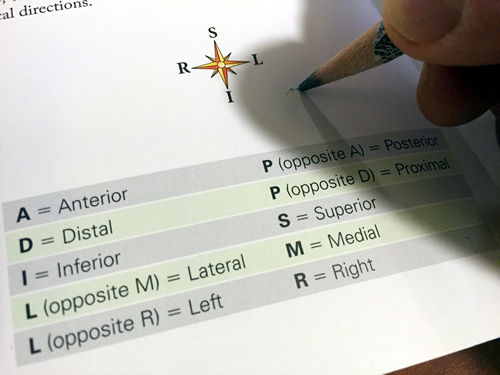 When using a map in which we cannot recognize any familiar landmarks, we almost subconsciously check the compass rosette, don't we? That's the first step in learning how to look at the new place we are about to explore. After a while, though, we don't need that rosette anymore. For example, when I look at a map of my hometown and see the familiar confluence of the Missouri and Mississippi Rivers, I can easily orient myself to the rest of the map. I don't even think of looking at the rosette.
When using a map in which we cannot recognize any familiar landmarks, we almost subconsciously check the compass rosette, don't we? That's the first step in learning how to look at the new place we are about to explore. After a while, though, we don't need that rosette anymore. For example, when I look at a map of my hometown and see the familiar confluence of the Missouri and Mississippi Rivers, I can easily orient myself to the rest of the map. I don't even think of looking at the rosette.In Structure & Function of the Body, we use the same device for helping readers orient themselves anatomical diagrams and photos. Our anatomical rosette looks just like the compass rosette you'd see on a geographical map. However, instead of N, S, E, and W, you'll find S (superior), I (inferior), A (anterior), P (posterior), and so on.
When looking at these anatomical rosettes, a beginner can immediately figure out "which way is up" and go from there—instead of getting mired down in spatial confusion. Our readers also get repeated practice in using the directional terminology of anatomy—eventually allowing them to determine correct directions with barely a thought.
All of our readers are beginners, so they need this kind of help to get a good start. We instructors don't need that—we already know our way around these anatomical views.
By having anatomical rosettes available in every anatomical illustration of Structure & Function of the Body, students have the training tools they need to gain the expertise that we instructors already have. By the time they've made it through to the end, our readers will not likely ever need these helps again. They know they "lay of the land" and can now find their way with their internal anatomical compass.
I didn't start looking for compass rosettes in geographical maps until somebody showed them to me and explained how they work. Consider taking a moment at the beginning of your A&P course to point out the anatomical rosettes and show your students how they work. You may want to refer your students to the explanation in Chapter 1 of the text and to the handy reference chart on the inside front cover of the book.
Adapted from Anatomy & Physiology


No comments:
Post a Comment